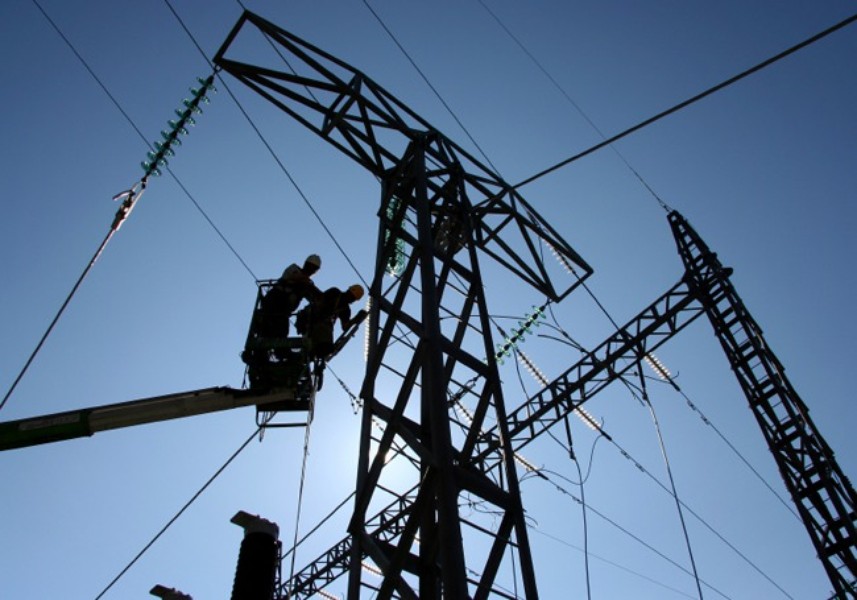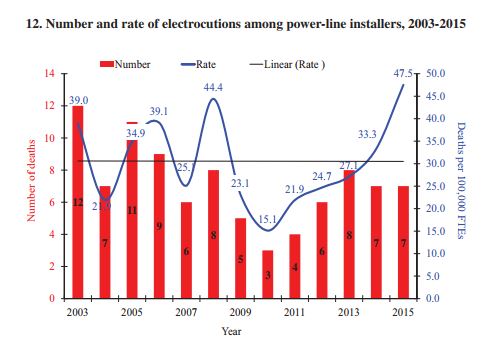Electrocution deaths in the construction industry and how to prevent them
 Construction is the industry that has the highest electrocution deaths among all industries. OSHA identifies electrocution as one of the leading causes of fatality among construction workers. In its latest Quarterly Data Report, the Center for Construction Research and Training (CPWR) is taking a close look at recent electrocution data and proposes solutions to prevent them.
Construction is the industry that has the highest electrocution deaths among all industries. OSHA identifies electrocution as one of the leading causes of fatality among construction workers. In its latest Quarterly Data Report, the Center for Construction Research and Training (CPWR) is taking a close look at recent electrocution data and proposes solutions to prevent them.
Since 2012 the construction industry rose back from the 2008 recession and so did the number of fatal construction accidents. From 2011 to 2015 fatal construction accidents increased by 26% from 781 to 985 fatalities. During the same period, electrocution fatalities rose by 17% from 70 to 82 fatalities. In average during this period electrocution deaths represented 9% of all construction accident deaths.
Electrocution deaths in the construction industry have been declining since 2003. From 134 in 2003 they recorded their lowest in 2012 with 66 deaths and went back up to 82 in 2015. The rate per 100,000 workers also went down from 1.3 in 2003 to 0.8 in 2015.
Direct or indirect exposure to 220 volts or more are responsible for 70% of the electrocution deaths with the primary source of electrocution being electric parts such as power lines, transformers and converters.
POWER-LINE INSTALLERS AR THE MOST AT RISK OF BEING ELECTROCUTED
Almost half of construction workers who died as a result of electrocution were working for a small business employing 1 to 10 people. A majority of them are electrical contractors. 105 electricians and 32 power line installers died from electrocution between 2011 and 2015. While electricians recorded a rate of 4 deaths per 100,000 workers power line installers had a rate of 29.7 deaths per 100,000 workers during the same period. Power line installers are the most at risk of dying from electrocution.
While looking at the yearly electrocution rate for power-line installers a dramatic upward trend was recorded over the last few years with a rate of 47.5 electrocution deaths for 100,000 workers, the highest death rate ever recorded since 2008 when it reached a pic of 44.4.
The main source of deaths for power-line worker is a direct or indirect contact with the line. It can can occurred through either a contact with the live wire, a contact with voltage while working on de-energized power lines, a contact with underground electric cable or when a ladder touches the power line.
Different safety measures such as the use of insulated blankets, cover-up equipment live-line tools and insulating line hose can be used by workers to avoid a contact with the power-line. Using planning tools such as Building Information Modeling can also be useful. Make sure that workers wear Personal Fall arrest System to prevent falls in case of shocks. While working on de-energized power-lines, various verification and tests must be effectuated before to start working. Additionally workers should use protective grounds and lock out tag out devices. Underground cables can be located with geospatial augmented reality systems and only non conductive ladder should be used while working near power-lines.
Download the complete report here
Picture: courtesy of the Integrated Group
 New York Personal Injury Attorneys Blog
New York Personal Injury Attorneys Blog



